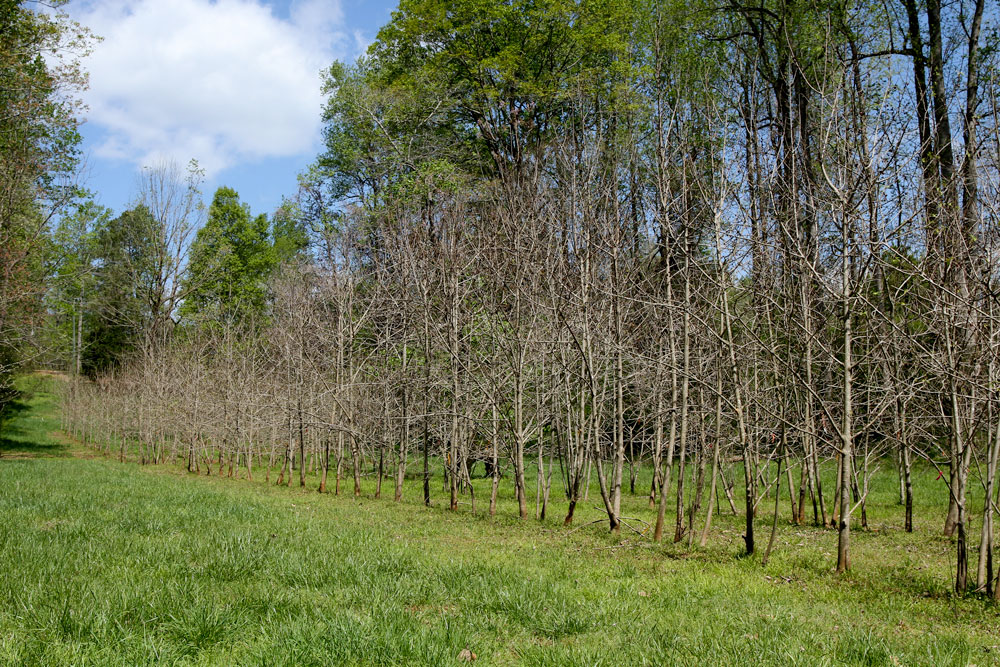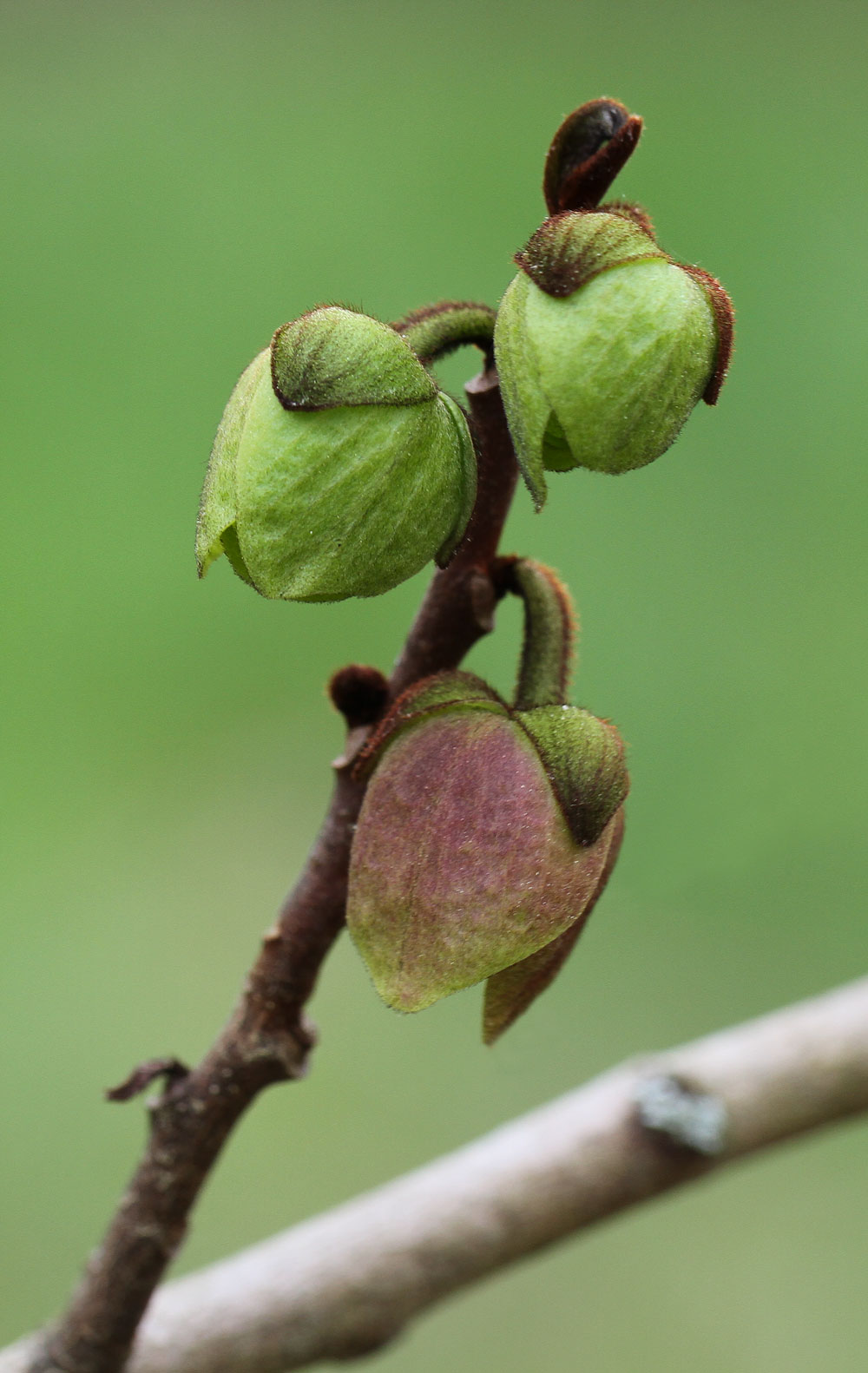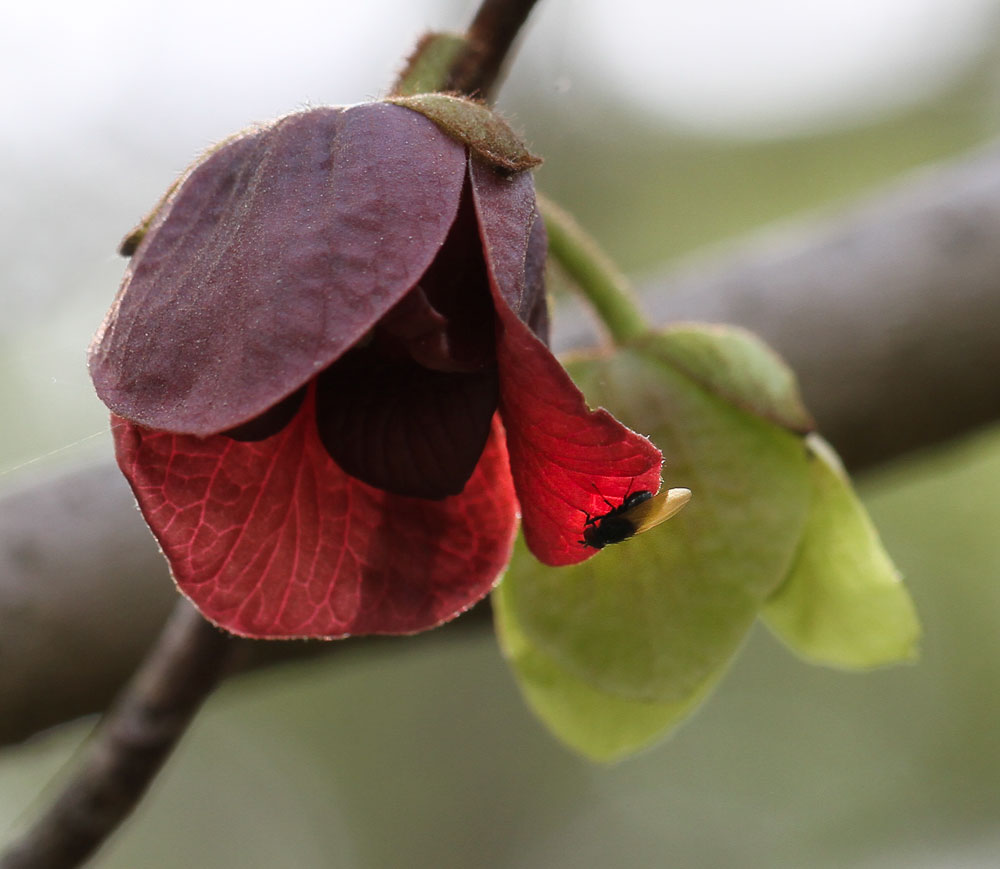Spring Blooms in the Pawpaw Orchard
go.ncsu.edu/readext?406825
en Español / em Português
El inglés es el idioma de control de esta página. En la medida en que haya algún conflicto entre la traducción al inglés y la traducción, el inglés prevalece.
Al hacer clic en el enlace de traducción se activa un servicio de traducción gratuito para convertir la página al español. Al igual que con cualquier traducción por Internet, la conversión no es sensible al contexto y puede que no traduzca el texto en su significado original. NC State Extension no garantiza la exactitud del texto traducido. Por favor, tenga en cuenta que algunas aplicaciones y/o servicios pueden no funcionar como se espera cuando se traducen.
Português
Inglês é o idioma de controle desta página. Na medida que haja algum conflito entre o texto original em Inglês e a tradução, o Inglês prevalece.
Ao clicar no link de tradução, um serviço gratuito de tradução será ativado para converter a página para o Português. Como em qualquer tradução pela internet, a conversão não é sensivel ao contexto e pode não ocorrer a tradução para o significado orginal. O serviço de Extensão da Carolina do Norte (NC State Extension) não garante a exatidão do texto traduzido. Por favor, observe que algumas funções ou serviços podem não funcionar como esperado após a tradução.
English
English is the controlling language of this page. To the extent there is any conflict between the English text and the translation, English controls.
Clicking on the translation link activates a free translation service to convert the page to Spanish. As with any Internet translation, the conversion is not context-sensitive and may not translate the text to its original meaning. NC State Extension does not guarantee the accuracy of the translated text. Please note that some applications and/or services may not function as expected when translated.
Collapse ▲Pawpaws (Asimina triloba) are native to 26 states in the eastern U.S. and are found along riverbanks and woodland floodplains in the wild. Our largest native fruit has a creamy texture and tropical flavor and has been enjoyed in jams, ice cream, beer, and many other dishes!
Grower Wynn Dinnsen grows over 250 pawpaw trees and evaluates them for flavor and favorable seed-to-pulp ratio at Full of Life Farms outside of Pittsboro. Wynn sells pawpaw fruit and pulp to several local restaurants and breweries.
The pawpaw tree blooms in early spring before the trees have leafed out. Flies are the primary pollinators of pawpaw blooms so many growers will place dead fish or even roadkill in the orchards during bloom to lure flies attracted to the stench.
The photos below were taken the week April 6-8, right after a hard freeze on the morning of April 6.
View photos of the paw paw harvest from Chatham County Cooperative Extension’s 2014 Farm Show & Tell
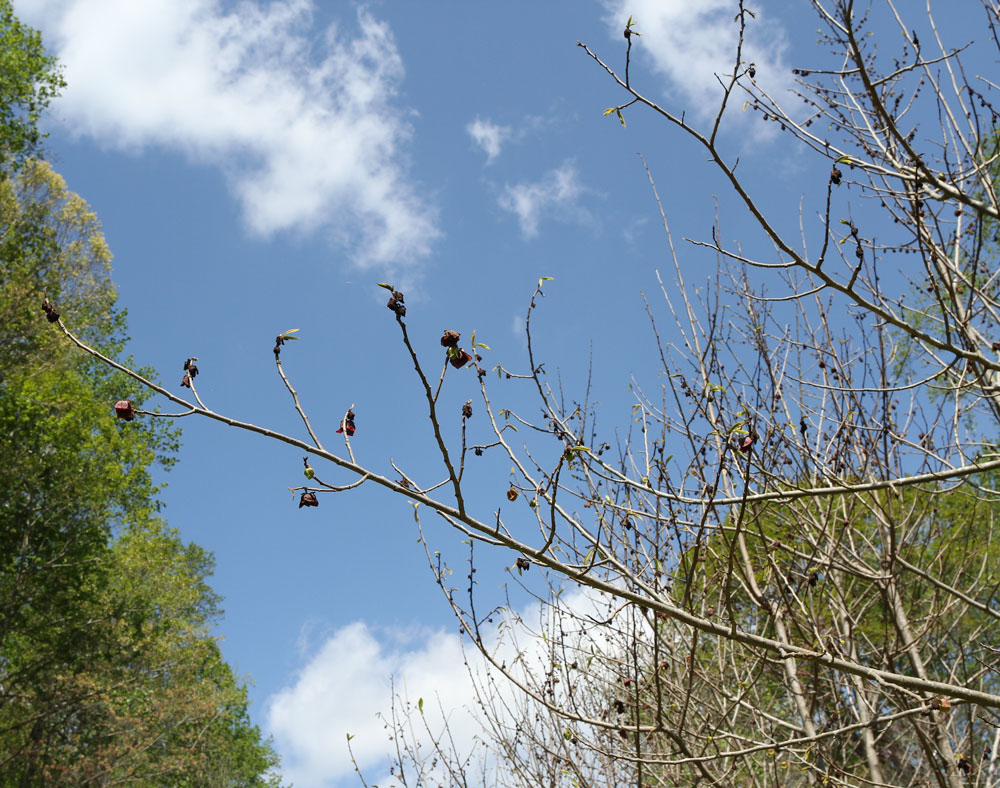
The dark-colored pawpaw blooms are not as showy as those of many of the non-native fruit trees. Photo by Debbie Roos.

Pawpaw flowers are self-incompatible, so you need more than one tree for cross pollination. Photo by Debbie Roos.
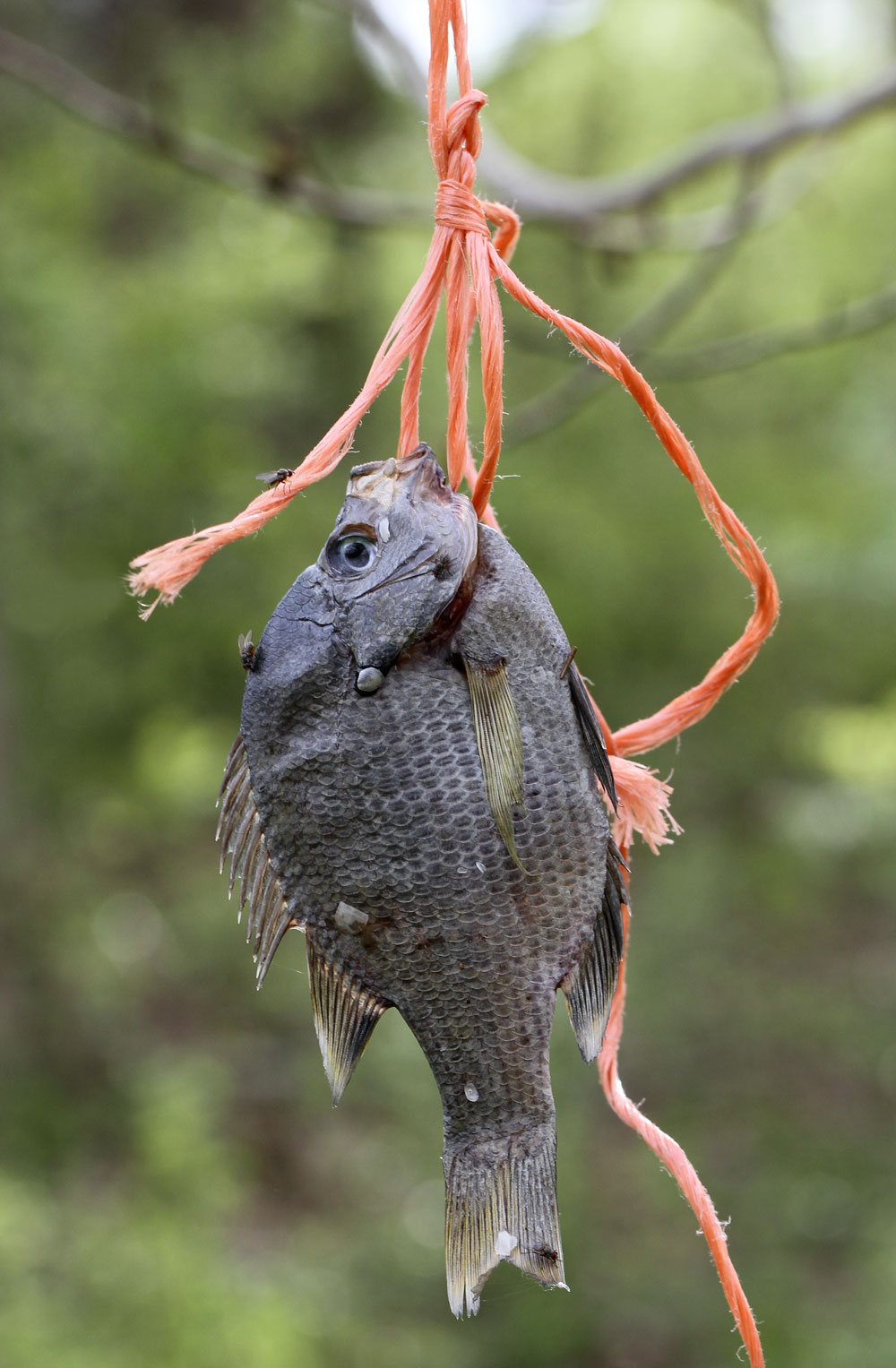
Wynn hangs dead fish in his pawpaw orchard during bloom to help attract pollinators. The primary pollinators of pawpaw are flies and beetles which are attracted to fetid smells. Some growers hang roadkill! Photo by Debbie Roos.
Want to grow your own pawpaw fruit? Country Farm & Home in Pittsboro will be selling Wynn Dinnsen’s pawpaw trees in late summer-fall in time for fall planting.
For more information about pawpaw production:
- North Carolina Pawpaw Festival
- Organic Production of Pawpaw – Kentucky State University
- Forest Production of Pawpaw – Kentucky State University
- Pawpaw Planting Guide – Kentucky State University
- Pawpaw Growing Information – Kentucky State University
- Specialty Crop Profile: Pawpaw – Virginia Cooperative Extension
- Pawpaw: a Tropical Fruit for Temperate Climates – ATTRA



